Today is the fifth World Emoji Day – a day to celebrate the tiny images on our phones that have transformed the way people chat online. Here are some things you need to know about those funny little pictures 👇:
Why today?
The Guardian’s product and service reviews are independent and are in no way influenced by any advertiser or commercial initiative. We will earn a commission from the retailer if you buy something through an affiliate link. Learn more.
The date was fixed on 17 July because if you peek at the emojis on your Apple or Android phone, you’ll see that is the date on display on the calendar emoji (📅). The origin of that date is that Apple first used it in its symbol to commemorate the date the Mac’s iCal feature was first announced.
Emojis have been around since 1999
Invented by Shigetaka Kurita, the ability to send a heart symbol on early Japanese pagers is the source of all emojis. Kurita drew inspiration from marks used in weather forecasts and from kanji characters to design a set of 176 symbols that covered a range of human emotions and activities that could be used on phones in 1999. The rest is history.
“At first we were just designing for the Japanese market,” says Kurita. “I didn’t assume that emoji would spread and become so popular internationally. I’m surprised at how widespread they have become. Then again, they are universal, so they are useful communication tools that transcend language.”
There’s an awful lot more of them now
Unicode, which oversees what is allowed to become an emoji, currently lists 1644 emojis, including smileys, people, sport, food, animals, flags and a myriad of other categories.
And we also send them a lot
Facebook has stated that every day on Facebook Messenger 900m responses sent consist of just emojis. It also says 700m emojis are included in posts on Facebook every day. The most popular emoji on Facebook in the UK is the “face with Tears of Joy” or “crying laughing” emoji 😂 - indeed English Oxford Dictionaries made it their word of the year in 2015.
Although you have to be careful when you deploy it:
On #WorldEmojiDay - a shoutout to my Mum, who’s only just started using them and sent a 😂 to her friend who’s dog just died 😳
— Tony Shepherd (@tonysheps) July 17, 2018
Emojis only became racially diverse in 2015
In 2014, Unicode proposed adding five different skin tones to the character set, allowing people to send messages that reflect how they look.
Since then there have been further efforts to improve the representation of people in the character set. In 2016, Google pushed to include emojis that showed women working in fields like engineering, chemistry, plumbing and farming. Apple has used this year’s #WorldEmojiDay to announce some updates to the set available on its phones, including “more hair options to better represent people with red hair, grey hair and curly hair” plus a new emoji for bald people.
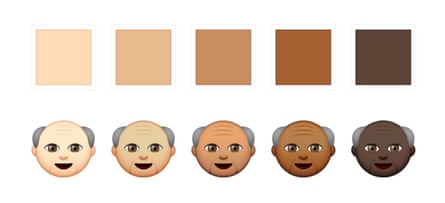
The original emojis ended up in MoMA
Gifted by the Nippon Telegraph and Telephone company in 2016, New York’s Museum of Modern Art acquired the 176 original 12-by-12 pixel designs for the original set of emojis, displaying them alongside its modern and expanded equivalents.
“Emojis as a concept go back in the centuries to ideograms, hieroglyphics, and other graphic characters, enabling us to draw this beautiful arch that covers all of human history,” said Paola Antonelli, senior curator of the museum’s department of architecture and design. “There is nothing more modern than timeless concepts such as these.”
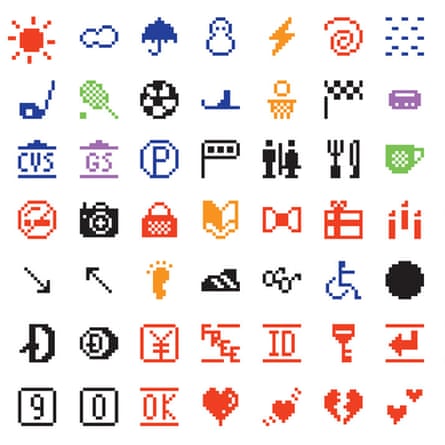
They have a weird unexpected use on Wikipedia
For reasons best known to nerdy developers, you can actually use emojis in Wikipedia URLs. Yes, honestly. If, for example, you type http://en.wikipedia.org/wiki/🐈 into your address bar, you’ll be redirected to the Wikipedia page for cats. Useful.
The Met Office definitely knows how to use them
#WorldEmojiDay
— Met Office (@metoffice) July 17, 2018
📘📘📘📘📘📘🌧️📘📘📘
📘📘📘📘📗📗📘📘📘📘
📘📘📘📘⛅️📗📗📘📘📘
📘📘📘📘📗📗📗📘📘📘
📘📘📘📘📘📗🌦️📘📘📘
📘📘📗⛅️📘📗📗📘📘📘
📘📗📗📗📘📘📗📗📘📘
📘📗📗📗📘📗⛅️📗📗📘
📗📗📗📗📘📗📗📗📗📗
📗📗📘📘📗📗📗📗⛅️📘
📘📘📘📘📘📗📗📗📗📘
📘📘📘📘📗⛅️📘📘📘📘
Emojis adopted strict gun control
In recent years the gun emoji has fallen out of favour, to be replaced by the water pistol. The #DisarmTheiPhone campaign in 2015 put pressure on Apple to make the change, saying that disarming the phone in your pocket would show that Americans wanted tighter gun control. While that might be a tenuous claim, the campaign was successful. Google was the last of the major platforms to make this change – finally following suit in 2018.
Although this lot maybe didn’t get the memo:
Happy #WorldEmojiDay from the #USArmy. pic.twitter.com/Qx5gOFxm4u
— U.S. Army (@USArmy) July 17, 2018
The emoji-only social network dream
With their use primarily evolving on social networks, there have been several attempts to start social messaging apps that focus exclusively on emojis. Perhaps the most extreme was Emojli, launched in 2014 by UK developers Matt Gray and Tom Scott, where even the usernames had to be emojis.
You can read a decent emoji-only novel
At least in translation, anyway. In 2013 the Library of Congress accepted into its collection an emoji-only translation of Herman Melville’s Moby Dick. A project overseen by Fred Benenson, library recommending officer Michael Neubert said: “What is striking about this work is that it takes a known classic of literature and converts it to a construct of our modern way of communicating, making possible an investigation of the question, ‘is it still a literary classic when written in a kind of smartphone-based pidgin language?’”
Although whether ☎️👨⛵🐳👌 really has the same impact over time as Melville’s opening line “Call me Ishmael” remains to be seen.
The Emoji Movie still made money
Despite being critically panned, winning four Razzies including worst movie, worst screenplay, worst director, and worst screen combo, and at one point having an accumulated rating of 0% on Rotten Tomatoes, depressingly the Emoji Movie still grossed over $200m (£152m). 💩
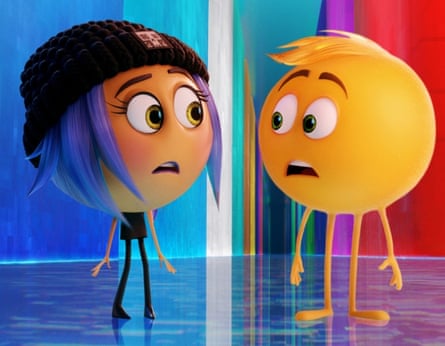
Emojis in the workplace aren’t always fun
According to the trade union Unite, in 2017 employees of Sports Direct were being asked to press a touchpad featuring a happy or sad face emoji to indicate whether they were satisfied with their working conditions or not. The union claimed that those pressing the sad face were then being identified by their fingerprints and asked to explain their grievances to management.
What’s the easiest way to type ¯\_(ツ)_/¯?
While some people say it isn’t strictly an emoji, Unicode does include the shrug gesture ¯\_(ツ)_/¯ in its classifications. Ironically, the easiest way to type it is to Google “How to type shrug emoji” then just copy and paste it from the results page and not type it at all.
The last word on emojis
From their creator, Kurita, interviewed in 2016:
“I don’t accept that the use of emoji is a sign that people are losing the ability to communicate with words, or that they have a limited vocabulary. Some people said the same about anime and manga, but those fears were never realised. And it’s not even a generational thing … People of all ages understand that a single emoji can say more about their emotions than text. Emoji have grown because they meet a need among mobile phone users. I accept that it’s difficult to use emoji to express complicated or nuanced feelings, but they are great for getting the general message across.”
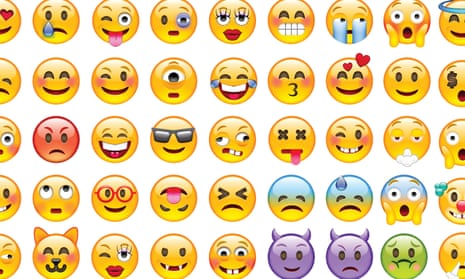



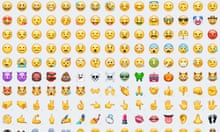
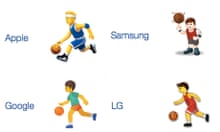


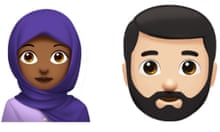
Comments (…)
Sign in or create your Guardian account to join the discussion